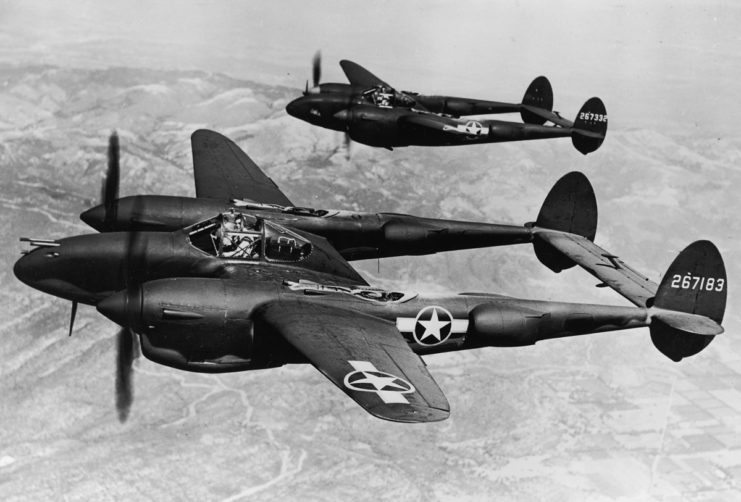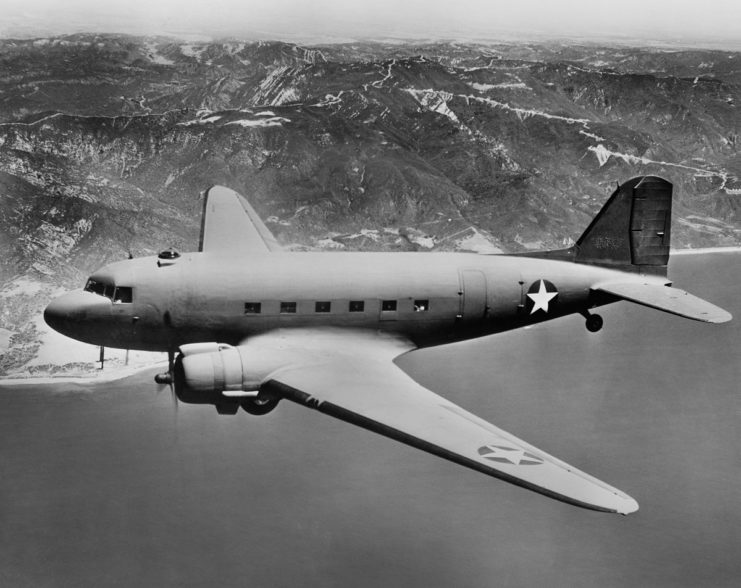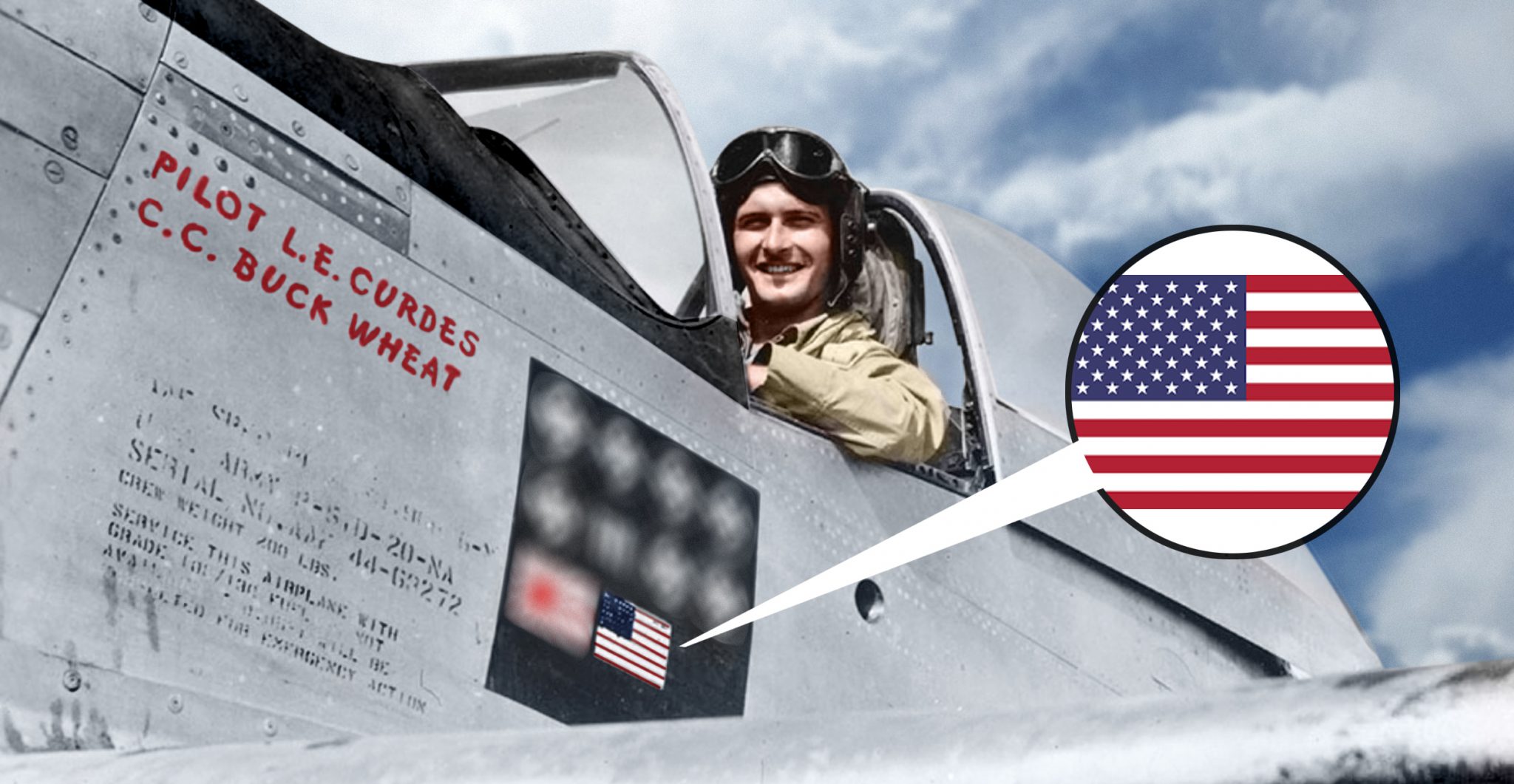An American pilot from Indiana, Louis Curdes was not only a fighter ace but one of the few pilots with the rare distinction of shooting down an aircraft from each of the big-three Axis air forces. Equally unusual, he is also credited with shooting down an American aircraft, which happened to be carrying his future wife. The scale of WWII meant anything that could happen did happen, and Curdes is certainly evidence for that.
Louis Edward Curdes
Curdes was born in Fort Wayne, Indiana, on November 2 1919. He joined the US Army Reserve in early 1942 at the age of 22. By the December of that year, he had already graduated from Flying School and was subsequently shipped out to the Mediterranean theater of operations.
Curdes and his P-38

When he arrived in the Mediterranean he was assigned to the 82nd Fighter Group, 95th Fighter Squadron, and was pretty much thrown into action instantly. He was equipped with a P-38 Lightning, one of the fastest aircraft in the world at the time.
He quickly got to work, dispatching three Bf 109s and damaging a fourth in one day over Tunisia, in April 1943. Less than a month later he shot down another two Bf 109s, making him a flying ace after just a few weeks of combat.
Over the next two months, Curdes shot down an Italian Macchi C.202 over Sardinia and two Bf 109s over Italy.
While thundering through the skies over Italy in late August he was bested in combat and shot down, potentially by skilled German ace Franz Schieß. He was sent to a POW camp near Rome, but luckily for Curdes Italy signed an armistice with the Allies after just a few days in captivity.
Curdes managed to escape the camp and was sent back to Fort Wayne in the US, but eventually wanted to return back to active duty. This was the start of his time in the Pacific theater.
Bad Angel
Curdes arrived in the Pacific and was assigned to the 4th Fighter Squadron and 3rd Air Commando Group in August 1944. This time he was given the newer and more capable P-51 Mustang, which he named “Bad Angel.”
The ace participated mostly in ground-attack missions against the Japanese and protected Allied movements and shipping.
In early 1945 he and his P-51 encountered a Japanese Mitsubishi Ki-46 southwest of Taiwan. He shot the aircraft down and immediately became one of the few American pilots to have claimed an Italian, Japanese and German aircraft.
But as he would soon prove, even friendly aircraft were not safe from the ace from Indiana.
Shooting down your future wife

On February 10, Curdes was flying in a squadron with three other aircraft flown by lieutenants Schmidtke, Scalley, and La Croix. On their return home the squadron split in two; Curdes and Schmidtke, and La Croix and Scalley.
As La Croix and Scalley passed over the island of Batan, they came across a small airfield in Japanese hands and attacked it, while calling for reinforcements. During the fight, La Croix was shot down and ditched in the sea, but survived the crash. Curdes flew circles above La Croix while they waited for a rescue aircraft. During the wait, a large aircraft started its final approach towards the airfield.
Curdes investigated the aircraft and realized it was an American C-47 transport plane. He tried to contact the aircraft, which was about to land on the airfield but received no response. He flew in front of it in the hopes it would change its course, but it continued on toward the Japanese base.
He assumed that the aircraft did not know it was a Japanese airfield and that they were better off crashing than being captured. Curdes quickly decided that he was to shoot the C-47 down.
He precisely targeted just the aircraft’s engines, forcing it to crash into the sea. Fortunately, the aircraft made a gentle landing and everyone on board survived. La Croix managed to make his way to their lifeboat, where they explained to him that the C-47 was lost, out of fuel and its radio was malfunctioning.
Curdes himself was now nearly out of fuel, so he returned back to base but guided a PBY flying boat out the next morning that collected the group. Everyone lived to tell the tale.
But the story doesn’t finish there.
Of the dozen people on board, the downed C-47 were two nurses. Coincidentally, one of these nurses, Svetlana Valeria, had been on a date with Curdes the night before he shot her aircraft down. Valeria and Curdes would marry on April 13, 1946
End of hostilities
When the war ended Curdes stayed in the military and participated in the Berlin Airlift.
In 1946, Curdes and Valeria (the nurse on the C-47) married. The pair stayed together for the rest of Curdes’ life.
He retired from the US Air Force in 1963 as a lieutenant colonel and set up a construction company.
Want War History Online‘s content sent directly to your inbox? Sign up for our newsletter here!
The fighter ace who shot down Italian, German, Japanese, and even American aircraft, passed away on February 5 1995 at the age of 75. Valeria, widowed after Curdes’ death, passed away on October 10, 2013.
